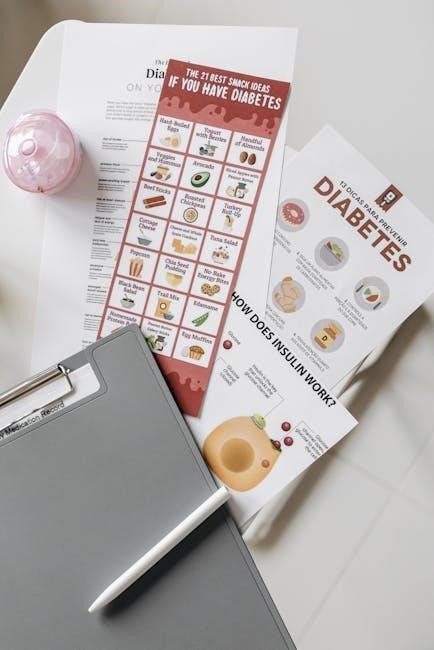miata buyers guide
Miata Buyers Guide: A Comprehensive Overview (November 21, 2025)
Navigating the Miata market requires diligence! Test drives are crucial, avoid rushing, and prioritize a thorough inspection before falling for a specific car.

The Mazda MX-5 Miata embodies accessible sports car thrills. Its lightweight design, rear-wheel drive, and available manual transmission deliver a uniquely engaging driving experience. Often lauded as a rare breed, the Miata offers pure driving pleasure without a hefty price tag.
For enthusiasts, it’s a platform for modification, track days, or simply enjoying open-top motoring. Resources like Miata.net provide invaluable community support and buying advice, making ownership even more rewarding. Past owners fondly recall memorable experiences with these cars.
Generational Differences: NA, NB, NC, ND & NE
Each Miata generation presents distinct characteristics. The NA (1990-1997) is the original, beloved for its simplicity. The NB (1999-2005) brought refinements. The NC (2006-2015) offered increased power and a more modern feel. The ND (2016-2024) prioritized lightweight agility;
Finally, the NE (2024-Present) represents the latest evolution. Understanding these differences is crucial when selecting a Miata that aligns with your driving preferences and budget.
NA Miata (1990-1997): The Original Roadster

The NA Miata embodies classic roadster charm. Often featuring a 1.6L engine, these early models are known for their pure driving experience. A silver 1990 1.6 was a casual autocross car for one owner, while a red 1995 was dedicated to track use. Inspect frame rails carefully – they aren’t suitable jacking points!
NB Miata (1999-2005): Refinements and Updates
The NB Miata brought subtle yet significant improvements. A 2000 NB served as a daily driver and appeared in five movie productions over 16 days! Don’t overlook the boot cover – it protects the folded convertible top. Experienced Miata owners on Miata.net might even accompany you for a pre-purchase inspection, often for just a beer!
NC Miata (2006-2015): Power and Modernization
The NC generation offered increased power and a more modern driving experience. While the author has moved on from Miata ownership due to physical limitations, fond memories remain of past cars – a silver 1.6 and a red track car. Remember, a pre-purchase inspection is vital; frame rails are vulnerable!
ND Miata (2016-2024): Lightweight and Agile
The ND Miata continues the tradition of lightweight, agile handling. Don’t feel pressured into a quick purchase; another Miata will appear. Prioritize a detailed inspection, potentially with an experienced Miata enthusiast from Miata.net, for a second opinion. Remember the often-overlooked boot cover!

NE Miata (2024-Present): The Latest Evolution

The newest Miata builds upon decades of refinement, offering modern features while retaining core driving enjoyment. Thorough pre-purchase inspections remain vital, focusing on frame rails and potential damage. Remember to assess the convertible top mechanism and boot cover condition. Utilize resources like Miata.net for informed buying decisions.
Essential Pre-Purchase Inspection Points
A meticulous inspection is paramount before committing to a Miata purchase. Critically examine the frame rails for damage – avoid using them as jacking points! Prioritize rust prevention checks in common areas. A compression test and assessment of oil consumption are crucial for evaluating engine health. Don’t overlook the importance of a qualified inspection.

Frame Rail Inspection: Avoiding Structural Damage
The Miata’s frame rails are susceptible to damage, often from improper jacking. Inspect them carefully for any signs of crumpling or bending. People mistakenly use them as lifting points, leading to structural issues. Damage here can be costly to repair and compromise the vehicle’s integrity. A thorough visual check is essential!
Rust Prevention and Common Areas

Miatas, while generally well-built, are prone to rust in specific areas; Pay close attention to the rear quarter panels, rocker panels, and around the shock tower mounts. Inspect the floor pans and undercarriage thoroughly. Addressing rust early is crucial; prevention through regular cleaning and undercoating is highly recommended to maintain the vehicle’s longevity.
Engine Health: Compression Test & Oil Consumption
A compression test is vital to assess the engine’s internal condition. Look for consistent readings across all cylinders, indicating healthy seals. Monitor oil consumption; excessive oil burning suggests worn piston rings or valve stem seals. Inspect for any visible leaks, particularly around the valve cover and oil pan gaskets. A well-maintained engine is key!
Convertible Top Condition & Boot Cover
Carefully examine the convertible top’s operation and condition. Check for tears, leaks, and smooth movement of the mechanism. Don’t overlook the boot cover – often missed by buyers! This protects the folded top from dust and damage. A missing or damaged boot cover indicates potential neglect, impacting the top’s longevity. Inspect it thoroughly!
Checking the Top Mechanism
Operate the convertible top multiple times, both manually and electrically (if equipped). Look for smooth, consistent movement without excessive resistance or unusual noises. Inspect the latches for secure engagement and disengagement. Examine the seals for cracks or deterioration, as these contribute to leaks. A sluggish or noisy mechanism signals potential repair costs, so assess carefully.

The Importance of the Boot Cover
Don’t overlook the often-forgotten boot cover! This crucial component protects the folded convertible top from dust, debris, and potential damage. A missing or damaged boot cover exposes the top to the elements, accelerating wear and tear. Replacement costs can add up, so factor its condition into your overall assessment of the vehicle’s value.
Transmission & Drivetrain Considerations
Choosing between manual and automatic transmissions significantly impacts the Miata driving experience. Manuals offer greater driver engagement, while automatics provide convenience. Inspect the differential for any unusual noises or leaks, indicating potential issues. Thoroughly assess the clutch engagement and shifting smoothness during your test drive; a worn clutch requires costly replacement.
Manual vs. Automatic: Which to Choose?
The choice hinges on your driving preference. Manual transmissions deliver a more connected, sporty feel, appealing to enthusiasts. Automatics offer ease of use, particularly in traffic. Consider your daily driving conditions and skill level. While manuals generally hold higher resale value, a well-maintained automatic can be perfectly suitable. Prioritize a smooth-shifting transmission, regardless of type.

Differential Inspection & Potential Issues
Inspect the differential for leaks and unusual noises. Listen for whining or clunking sounds during test drives, indicating potential wear. Check the fluid level and condition – metallic particles suggest internal damage. The limited-slip differential (LSD) is desirable, enhancing handling, but requires specific maintenance. Address any issues promptly to prevent costly repairs and maintain optimal performance.
Interior Inspection: Wear and Tear
Evaluate seat condition and upholstery for rips, stains, or excessive wear. Examine the dashboard for cracks or fading, and test all electrical components – lights, radio, windows. Check for proper operation of the heater and air conditioning. A well-maintained interior suggests a caring owner, while significant wear may indicate neglect or high mileage. Don’t overlook the boot cover!
Seat Condition and Upholstery
Thoroughly inspect the seats for tears, rips, or significant wear patterns. Leather seats may exhibit cracking or fading, while cloth upholstery can show staining or thinning. Consider the age and mileage of the Miata when assessing wear. Aftermarket seats might indicate track use. Check bolstering – a key indicator of support and condition.
Dashboard and Electrical Components
Carefully examine the dashboard for cracks or sun damage, common in older Miatas. Test all electrical components: lights, signals, wipers, radio, and power windows. Inspect for any warning lights illuminated on the instrument cluster. Verify the functionality of the air conditioning and heating systems. Look for evidence of previous electrical repairs or modifications, potentially indicating underlying issues.
Test Drive: What to Look and Listen For
During the test drive, focus on handling and steering feel – a Miata should feel nimble and responsive. Listen for any unusual noises from the engine, transmission, or suspension. Assess engine performance for smooth acceleration and consistent power delivery. Check for vibrations or clunking sounds, indicating potential drivetrain problems. Ensure the car tracks straight and brakes effectively.
Handling and Steering Feel
A Miata’s hallmark is its exceptional handling; it should feel remarkably nimble and responsive. Pay close attention to steering precision – there shouldn’t be excessive play or vagueness. Evaluate body roll through corners; it should be controlled and predictable. Note how the car responds to quick steering inputs, seeking a direct and engaging connection to the road.
Engine Performance and Smoothness
During your test drive, assess the engine’s responsiveness across the entire RPM range. It should accelerate smoothly without hesitation or stumbling. Listen carefully for any unusual noises – knocking, ticking, or rattling – which could indicate underlying issues. Observe the oil consumption; excessive use suggests potential seal problems. A healthy Miata engine delivers a lively and enjoyable driving experience.
Common Miata Problems & Repair Costs
Miatas, while reliable, have common issues. Cooling system failures – including radiator and water pump – are frequent, costing $500-$1000 to repair. Oil leaks, often from valve cover or rear main seals, can range from $200-$800. Rust, particularly in the frame rails, demands attention and potentially costly welding. Budget for preventative maintenance and potential repairs when negotiating the purchase price.
Cooling System Issues
Miata cooling systems are prone to failure. Radiators frequently develop leaks, especially in older models, requiring replacement ($300-$600). Water pumps can also fail, leading to overheating and potential engine damage ($200-$400 for replacement). Inspect hoses for cracks and swelling. A thorough cooling system flush and inspection are vital during a pre-purchase inspection to avoid costly repairs down the line.
Oil Leaks and Seals
Expect some oil consumption and potential leaks in older Miatas. Common culprits include the rear main seal, camshaft seals, and valve cover gasket. Inspect the engine and undercarriage for signs of oil residue. Minor leaks are often manageable, but significant leaks require attention ($100-$500 per seal). A compression test helps assess engine health and potential internal oil burning.
Resources for Miata Buyers
Miata.net: A Valuable Online Community
Miata Forums and Clubs
Beyond Miata.net, numerous dedicated forums and local Miata clubs offer invaluable support. These communities provide a space to connect with fellow enthusiasts, discuss specific models, and gain firsthand advice from experienced owners. Consider joining a local club; members often offer inspection assistance – perhaps even accompanying you for a beer in exchange!
Negotiating the Price: What’s a Fair Deal?
Establishing a fair price hinges on understanding current market value for the specific Miata generation and condition. Don’t hesitate to leverage any findings from your pre-purchase inspection – identified issues are legitimate negotiating points. Remember, another Miata will appear; walking away from an overpriced or problematic car is wise!
Understanding Market Value
Determining a fair price requires research beyond the seller’s asking price. Consider the Miata’s year, generation, mileage, and overall condition. Online resources, like Miata.net’s FAQ section for used MX-5s, provide valuable data points. Compare similar vehicles currently for sale to establish a realistic range, and factor in any necessary repairs identified during inspection.
Leveraging Inspection Findings
A pre-purchase inspection provides powerful negotiating leverage. Document any identified issues – rust, mechanical concerns, or cosmetic flaws – and use them to justify a lower offer. Obtain repair estimates to demonstrate the cost of addressing these problems. Don’t hesitate to walk away if the seller is unwilling to negotiate reasonably, as another Miata will appear.
Avoiding Common Buyer Mistakes
Impatience and emotional attachment are Miata buyers’ biggest pitfalls. Resist the urge to rush a purchase; thoroughly inspect any potential car before letting yourself fall in love. Remember, another Miata will inevitably surface. Don’t compromise on condition or price – walking away from a seemingly perfect car is often the wisest decision.
Don’t Rush the Purchase
The Miata market offers frequent opportunities; don’t feel pressured into a quick decision. A hasty purchase often leads to overlooking critical flaws. Take your time, explore multiple options, and resist the temptation to settle. Patience allows for a more informed choice, ensuring you find a Miata that truly meets your needs and budget without regret.
Falling in Love Before Inspection
Emotional attachment can cloud judgment; avoid becoming enamored with a Miata before a comprehensive inspection. Objectivity is paramount when assessing a used vehicle. A pre-purchase inspection reveals potential issues that might otherwise be missed. Prioritize mechanical soundness over aesthetic appeal, ensuring a reliable and enjoyable ownership experience, free from costly surprises down the road.

